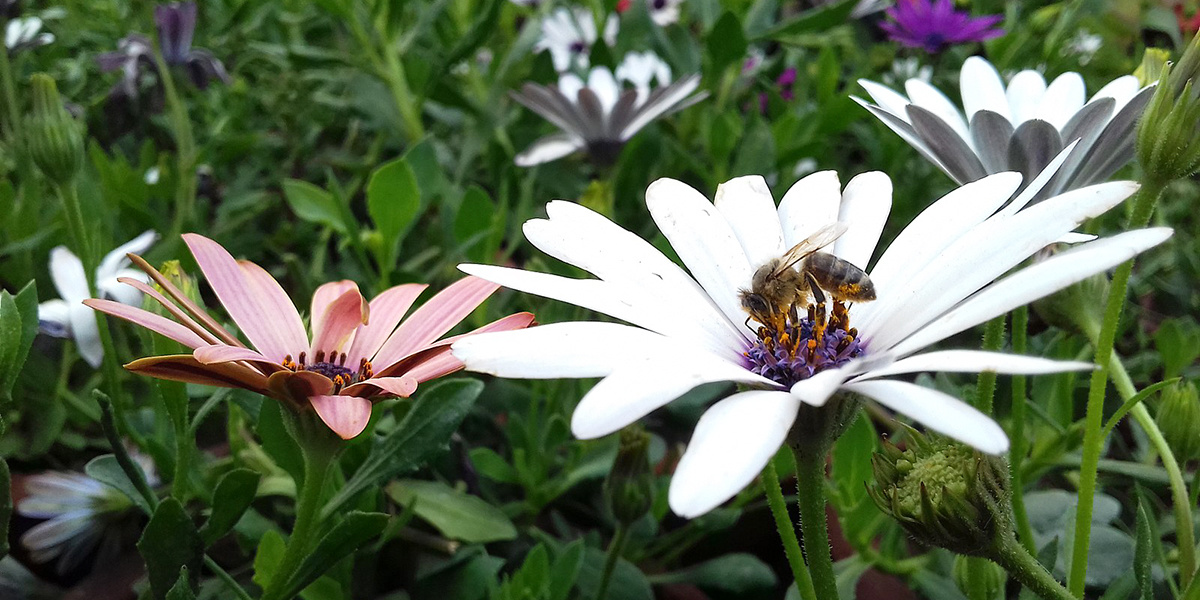
Study Shows Some Pesticides More Bee-Safe Than Others, But Are Any Pesticides Eco-Friendly?

A study published Thursday in Current Biology is being hailed in a University of Exeter press release as a major “breakthrough” in developing bee-friendly insecticides. But some environmentalists think the research is asking the wrong questions to begin with.
Pesticide Action Network UK Director Keith Tyrell told DW that focusing only on bee-safe pesticides was misguided, since insect loss also threatened overall biodiversity.
“We need to find a way to change our agricultural model, and switch to non-chemical pest control methods that work with nature. These techniques exist and are effective,” Tyrell told DW.
The study, conducted by the University of Exeter, Rothamsted Research and Bayer AG, isolated the enzymes in bees that determine their sensitivity to different neonicotinoids. Neonicotinoids are controversial pesticides that have been restricted in the EU since 2013 due to their impact on bee populations.
While previous research had indicated that bees responded better to certain neonicotinoids because they could metabolize them faster, the researchers were able to isolate the subfamily of enzymes called cytochrome P450 responsible for breaking down neonicotinoids.
The subfamily, called CYP9Q, metabolizes thiacloprid well and imidacloprid poorly, the study found.
University of Exeter research-team-leader Chriss Bass hoped the findings would help develop bee-safe pesticides.
“Identifying these key enzymes provides valuable tools to screen new pesticides early in their development to see if bees can break them down,” he said in the University of Exeter press release.
However, it should be noted that Bayer, which manufactures neonicotinoids, helped fund the study, and Bass seemed almost more concerned with the manufacturer’s bottom line than he did with the health of the bees.
“It can take a decade and $260 million to develop a single pesticide, so this knowledge can help us avoid wasting time and money on pesticides that will end up with substantial use restrictions due to intrinsic bee toxicity,” he wrote.
Just because bees can break down thiacloprid doesn’t mean it’s entirely healthy for them to do so, Dave Goulson of the University of Sussex told DW. He pointed to research he conducted in 2017 showing the pesticide did hurt bumblebee colonies.
“Despite the lower toxicity to bees compared to some other neonicotinoid pesticides, there is evidence that thiacloprid use does harm bumblebee nests under field conditions,” he told DW. “It is less toxic, but applied at a much higher rate.”
However, Lund University researcher Maj Rundlöf, who published a 2015 study showing neonicotinoids hurt bee populations, said it was helpful to distinguish between more and less harmful products.
“All neonicotinoids are not the same,” she told ScienceNews. “It’s a bit unrealistic to damn a whole group of pesticides.”
But Tyrell’s point, that even insecticides that take out only their target can have disastrous consequences for ecosystems, was born out by the results of two recent French studies reported by The Guardian Tuesday. The studies found that in, the past decade and a half, populations of once-common bird species like the Eurasian skylark and ortolan bunting had declined by at least one third in the French countryside. Researchers hypothesized that the decline is likely due to pesticides that kill the insects birds depend on for food.
“There are hardly any insects left, that’s the number one problem,” Vincent Bretagnolle, an ecologist at the Centre for Biological Studies in Chize, told The Guardian.

 233k
233k  41k
41k  Subscribe
Subscribe 